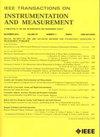Prototypical Contrastive Domain Adaptation Network for Nonstationary EEG Classification
IF 5.6
2区 工程技术
Q1 ENGINEERING, ELECTRICAL & ELECTRONIC
IEEE Transactions on Instrumentation and Measurement
Pub Date : 2024-10-28
DOI:10.1109/TIM.2024.3476618
引用次数: 0
Abstract
The identification of electroencephalography (EEG) signals’ cross sessions and subjects remains challenging due to the variability of data caused by extraneous factors and individual differences in EEG signals. Existing domain-adaptive transfer methods using cross-domain labeled samples for classification are too coarse and could lead to negative transfer problems. To solve this problem, we propose a prototypical contrastive domain adaptation (PCDA) network in this article. First, we align the data from different domains to reduce the data distribution differences for supporting the subsequent model construction. Then, a conditional domain adversarial network is used in the feature extraction stage to achieve domain alignment and learn deep feature representations. Second, we propose a scoring method to equivalently quantify the similarity of data from different domains using resting-state data and select similar source domain data to fine-tune the model. Finally, we propose a prototypical contrastive (PC) learning module. In-domain PC learning captures and compares the category-wise semantic structure of the data and the learned representations to enable the clustering of similar features. Cross-domain PC learning encodes and compares the semantic structure in shared embedding space to enable self-supervised feature alignment and reduce negative transfer. The experimental results show that the PCDA network achieves better results on the datasets of brain-computer interface (BCI) Competition IV II-a and II-b, and the ablation experiments validate the efficacy of the method.用于非稳态脑电图分类的原型对比域自适应网络
由于外在因素和脑电信号的个体差异造成数据的多变性,对跨时段和跨受试者的脑电信号进行识别仍具有挑战性。现有的使用跨领域标记样本进行分类的领域自适应转移方法过于粗糙,可能导致负转移问题。为解决这一问题,我们在本文中提出了一种原型对比域自适应(PCDA)网络。首先,我们对来自不同领域的数据进行对齐,以减少数据分布差异,从而为后续的模型构建提供支持。然后,在特征提取阶段使用条件域对抗网络实现域对齐并学习深度特征表征。其次,我们提出了一种评分方法,利用静息态数据等效量化不同领域数据的相似性,并选择相似的源领域数据对模型进行微调。最后,我们提出了一个原型对比(PC)学习模块。域内 PC 学习捕捉并比较数据的类别语义结构和学习到的表征,以实现相似特征的聚类。跨域 PC 学习对共享嵌入空间中的语义结构进行编码和比较,以实现自我监督的特征对齐并减少负迁移。实验结果表明,PCDA 网络在脑机接口(BCI)竞赛 IV II-a 和 II-b 的数据集上取得了更好的结果,而消融实验则验证了该方法的有效性。
本文章由计算机程序翻译,如有差异,请以英文原文为准。
求助全文
约1分钟内获得全文
求助全文
来源期刊

IEEE Transactions on Instrumentation and Measurement
工程技术-工程:电子与电气
CiteScore
9.00
自引率
23.20%
发文量
1294
审稿时长
3.9 months
期刊介绍:
Papers are sought that address innovative solutions to the development and use of electrical and electronic instruments and equipment to measure, monitor and/or record physical phenomena for the purpose of advancing measurement science, methods, functionality and applications. The scope of these papers may encompass: (1) theory, methodology, and practice of measurement; (2) design, development and evaluation of instrumentation and measurement systems and components used in generating, acquiring, conditioning and processing signals; (3) analysis, representation, display, and preservation of the information obtained from a set of measurements; and (4) scientific and technical support to establishment and maintenance of technical standards in the field of Instrumentation and Measurement.
 求助内容:
求助内容: 应助结果提醒方式:
应助结果提醒方式:


